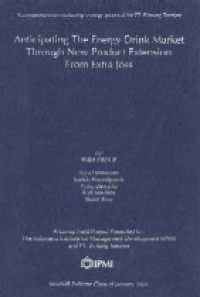
Survey and analysis of mobile telephone industry in Indonesia: a case study at P.T. Erindo Utama
| Gmd : Text
| Availability :
| 00000010082 | 72 | (GFP) | Available - Ada |
In July of 1992, the investor of the Ericsson NMT 450 system operating in Indonesia, P.T. Rajasa Hasanah Perkasa, will have completed an expansion to the System's capacity. Combined with this event is the fact that the price to be charged for Ericsson Mobile Telephones on this system has been deregulated by the government. As a result of these events, P.T. Erindo utama would like to know the price, which they should charge for the expected sales of mobile telephones.
In order to make a recommendation on this issue, a three stage "data collection process was conducted in addition to an overall analysis of the Indonesian Mobile Telephone Industry.
The results of the survey revealed that while the respondents were for the most part relatively dissatisfied with the performance they had received from their Ericsson Mobile Telephones; they do value the benefits they receive in using their mobile telephones. Moreover, in determining a price they would be willing to pay if they were required to purchase a mobile telephone today, the most important determinant of price was the price of other mobile telephones on the market.
The Indonesian Mobile Telephone Industry was found to have slowly evolved from a monopolistic industry in terms of Systems, to the oligopolistic setting, which exists today. The recent addition of the AMPS System to Indonesia has brought competition to the industry and from Rajasa's and Erindo's point of view, the loss of market share. Also, the government decree establishing AMPS as the future national system has given the system an additional competitive advantage.
Based on the survey results and the industry analysis therefore, the recommendation on this issue follows:
1. The price to be charged by Erindo is entirely dependent upon what direction it is felt the industry is heading in. In our opinion, the future is not with the NMT 450 system and as a result, the price to be set should be Rp. 7.05 million.
2. This price is equal to the price charged for a comparative AMPS outstation that is felt to be vital given the lack of an obvious reason as to why a potential customer should purchase an Ericsson outstation instead of a competing outstation.
3. It is also felt that this price is more in line with the present capability system of Erindo. At the moment, it is not felt that Erindo could accommodate a large number of customers wishing to purchase an outstation at anyone time given the physical limitations of its office and the lack of a "consumer oriented" organization.
4. Furthermore, while this price would not create a strong demand for Ericsson outstations being sold on the NMT 450 System, it would allow Ericsson the opportunity to expend its efforts towards locating an investor for its far more advanced Digital System.
Finally, since the main source of dissatisfaction amongst the present customers of the NMT 450 System stems from the congested nature of the system and assuming that the AMPS System will in due time experience the same problems, this recommendation is felt to deal more with Erindo's long term survival in the Industry than with any short-term gains which might be available in setting a lower price.
Research location: PT Erindo Utama
Supervisor: Prabowo
Accepted: August 1992
| Series Title |
-
|
|---|---|
| Call Number |
72
|
| Publisher Place | Jakarta |
| Collation |
v, 37p. : figs., tabs. ; 27 cm.
|
| Language |
English
|
| ISBN/ISSN |
-
|
| Classification |
-
|
| Media Type |
-
|
|---|---|
| Carrier Type |
-
|
| Edition |
-
|
| Subject(s) | |
| Specific Info |
-
|
| Statement |
-
|
| Content Type |
-
|
No other version available







